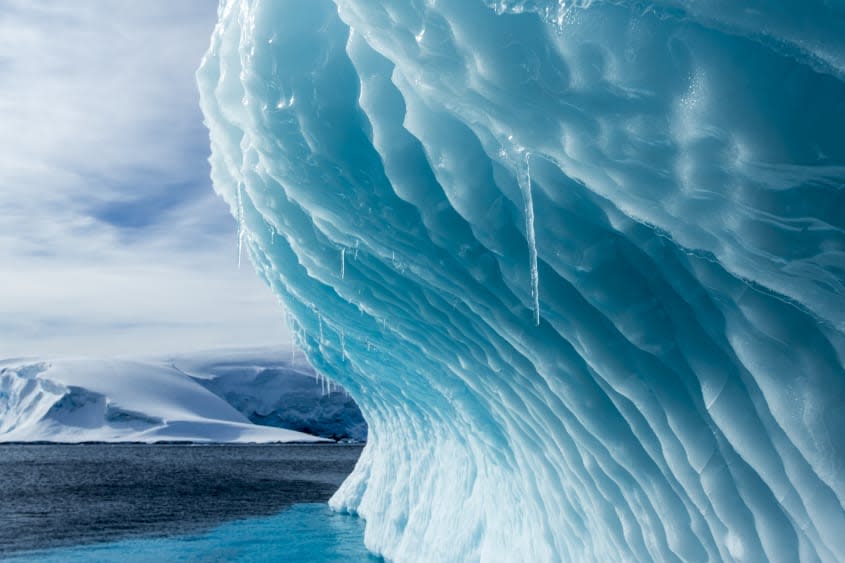Why are scientists searching for the world's oldest ice?

Scientists are on the hunt for Earth's oldest ice, but what exactly are they hoping to learn? Here's everything you need to know:
What are scientists searching for?
Armed with drills, scientists have trekked to the Earth's southernmost continent — Antarctica — to hopefully pull up a slice of geologic history. Specifically, scientists are trying to recover the oldest pieces of ice on Earth in hopes of learning how the Earth's climate has changed, writes Scientific American.
The goal is to retrieve an ice core, which has been preserved for years under layers of snow, by drilling multiple kilometers down. The cores act almost like the rings inside a tree, in that they can paint a picture of Earth's atmosphere over time. To make matters even more interesting, there is a "friendly race" between Europe, Australia, and the U.S. — where the project is called the Center for Oldest Ice Exploration, or COLDEX — to see who can first find and extract the ice.
While the oldest known core of ice dates back approximately 2.7 million years, per Science, the oldest continuous ice core dates back just 800,000. And because the 2.7 million-year-old core came from the edge of the continent, it's not nearly as dated in layers as the continuous core. In launching COLDEX, scientists are hoping to fill in the gaps between the two pieces.
"It's sort of like a box of puzzle pieces. With a traditional [continuous] ice core, all the jigsaw pieces are exactly in the right spot," said Christo Buizert, leader of the COLDEX ice analysis team. But cores collected from the edge of the continent are "like somebody just took the puzzle and shuffled all the pieces together."
Evidence suggests there is even older ice to be found, as well, some of which could date back potentially 5 million years. "The ice that is deposited at the surface of Antarctica is being buried and gradually flowing out toward the [continent's] edges — and then eventually is lost, melting into the ocean or as icebergs calving into the ocean. Because of that process, the oldest ice is always rare," Ed Brook, director of COLDEX, told Scientific American.
Why are scientists interested in the ice?
The ice contains air bubbles indicative of the atmospheric conditions when it first froze over, affording researchers valuable comparative material to measure against today's atmosphere. As Scientific American notes: "This is about as close to time travel as scientists can get."
"How much does sea level go up? How much does the climate continue to warm?" Brook has asked, per a report in Climatewire. "By getting a much more accurate picture of the greenhouse gas concentration in the atmosphere, we should be able to say something more specific about how sensitive the earth's system is to greenhouse gases."
Specifically, COLDEX is hoping to extract a continuous 1.5 million-year-old core, a goal both the European and Australian teams have, as well. Samples that old would give scientists a look at the climate "before time."
"There's a reason why we're interested in these earlier [ice] intervals," said Sarah Shackleton, a COLDEX team member and Princeton University postdoctoral researcher in paleoclimatology. "And it's because they were warmer."
What can the old ice tell us about the climate?
Scientists can analyze the gas concentrations within the ice's air bubbles to paint a picture of the atmospheric makeup years ago, as well as identify the planet's "climate heartbeat," or the relationship between carbon dioxide and Earth's temperatures. For instance, atmospheric carbon dioxide in the 2.7 million-year-old sample "did not exceed 300 parts per million," which is "well below today's levels," Science wrote in 2017.
Further, though the planet has long suffered changes in climate, those fluctuations used to be much smaller than they are today. To that end, the ice samples afford researchers a chance to compare today's rapid climate changes at the hands of humans to those that happened before humans.
"A perfect analogy would be if somebody had burned all the fossil fuels up 2 million years ago," Brook said, per Climatewire. "So the changes in the past are not as rapid as we're experiencing now. But there's still information that's still very important to understand how climate works."
You may also like
Why U.S. teens aren't getting their driver's licenses
The dangers of the Ozempic craze
Americans applying for controversial 'golden passports' more than any other nationality, report says

